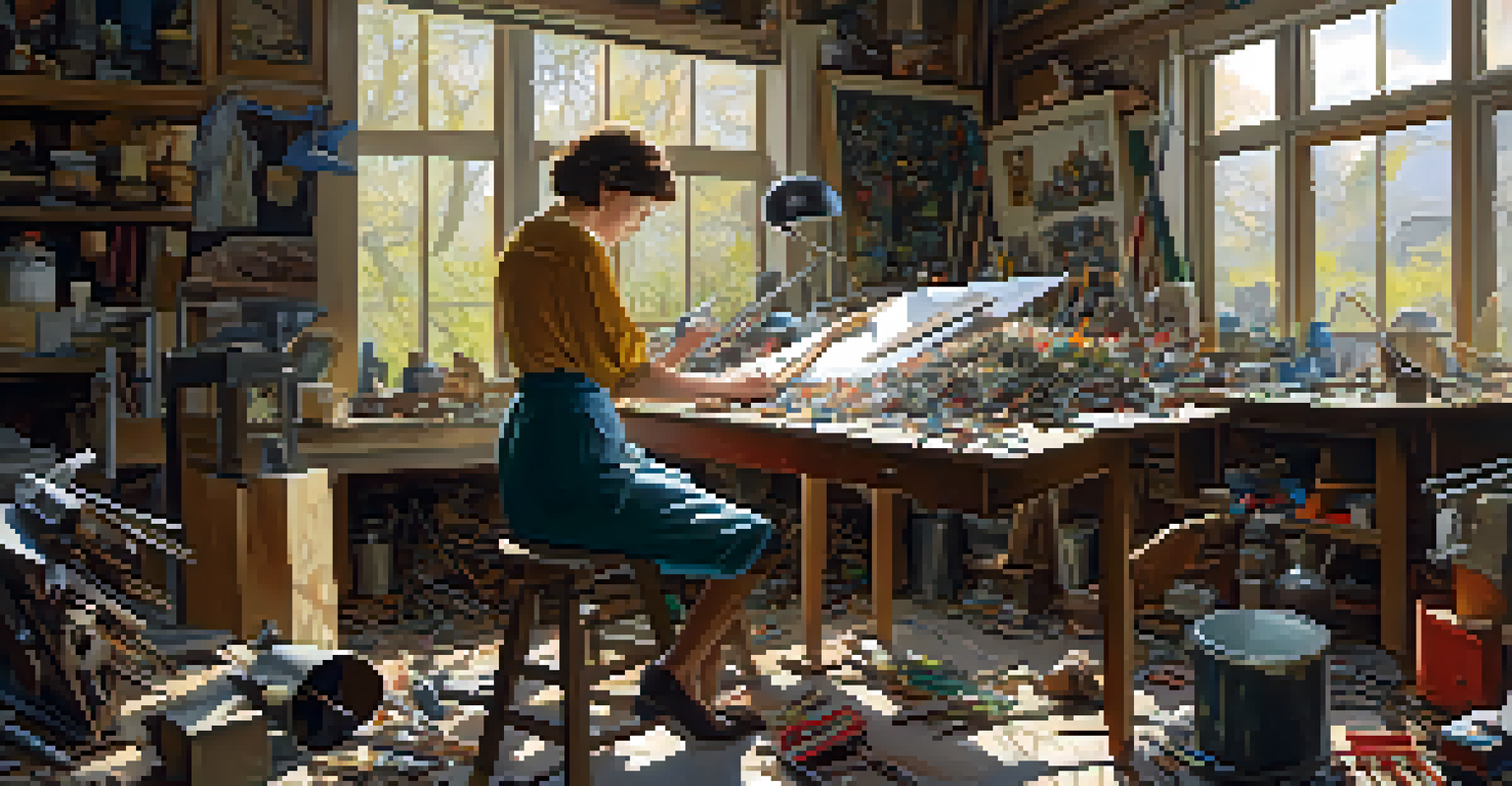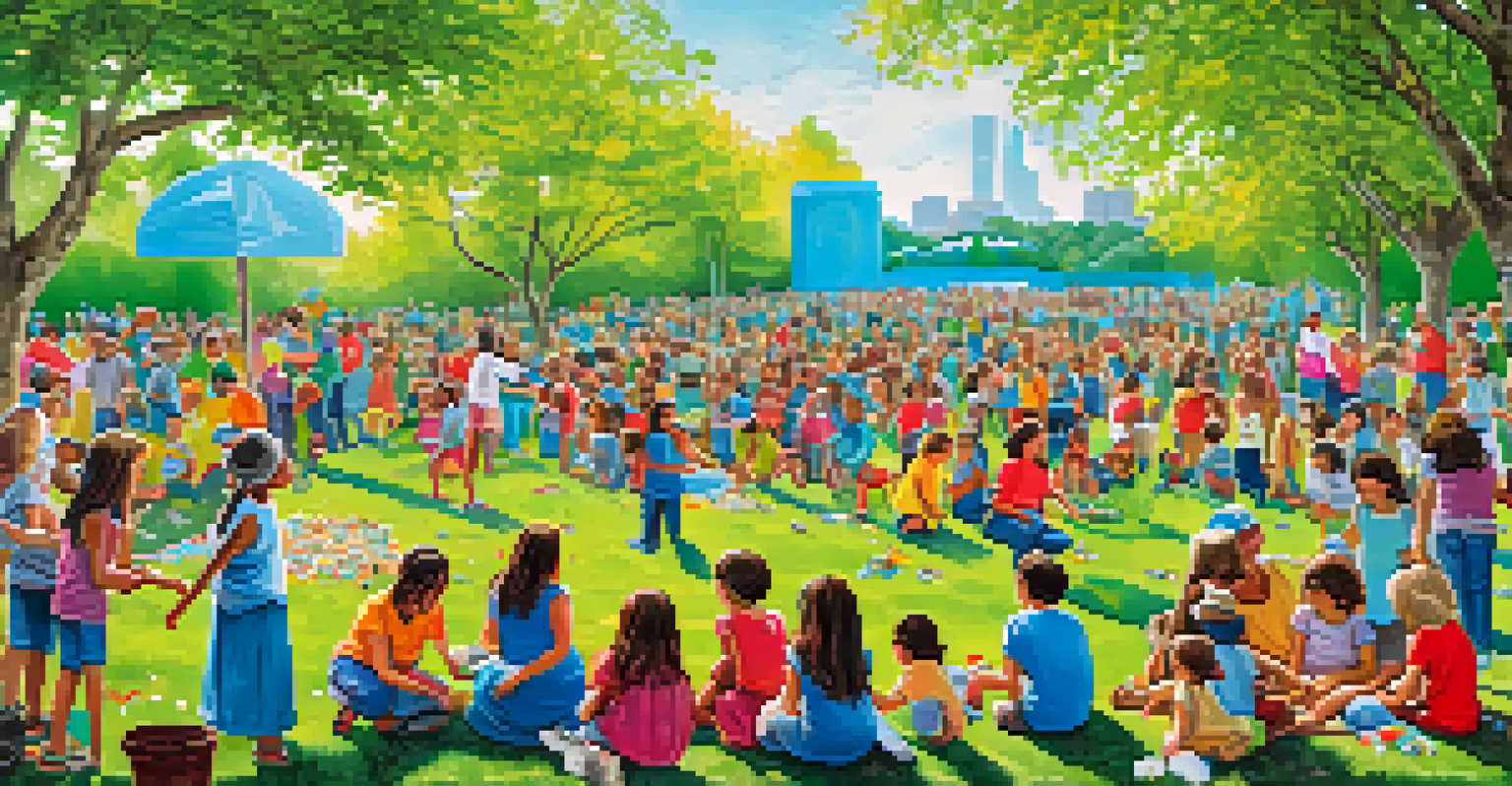From Waste to Art: Carving for Environmental Change

Understanding Waste: A Canvas for Creativity
Every day, we produce tons of waste, from plastic to metal, that often ends up in landfills. But what if this waste could be transformed into something beautiful? Artists around the world are embracing this challenge, turning discarded materials into stunning pieces of art that tell a story of innovation and sustainability.
The greatest threat to our planet is the belief that someone else will save it.
This process not only highlights the potential of materials we usually overlook but also raises awareness about our consumption habits. It's a creative solution to a pressing problem, reminding us that beauty can emerge from the very things we consider trash.
By using waste as their canvas, these artists challenge societal norms about value and beauty, encouraging us all to see the potential in what we throw away. This perspective shift is crucial in sparking a broader discussion about environmental responsibility.
The Role of Art in Environmental Advocacy
Art has always been a powerful medium for change, and when it comes to environmental issues, it can be particularly impactful. Artists use their platforms to communicate urgent messages about sustainability, often in ways that resonate more deeply than statistics and reports ever could. Through visual storytelling, they engage audiences emotionally, prompting reflection and action.

For instance, a sculpture made from ocean debris not only showcases artistic talent but also highlights the dire state of our oceans. This kind of art can inspire individuals to rethink their habits and advocate for cleaner environments.
Art Transforms Waste into Beauty
Artists worldwide are turning discarded materials into stunning works of art, highlighting sustainability and the potential of what we consider trash.
By merging creativity with activism, these artists are carving a path toward change, inspiring others to join the movement for a more sustainable future. Their work serves as a reminder that we all have a role to play in protecting our planet.
Examples of Transformative Waste Art Projects
Around the globe, numerous artists and projects shine a light on the possibilities of waste art. For instance, the 'Trash Isles' campaign, which sought to declare a new country made entirely of ocean plastic, gained significant media attention. This bold artistic statement brought the conversation about plastic pollution to the forefront.
Art is not a mirror to hold up to society, but a hammer with which to shape it.
Another notable example is the 'Washed Ashore' project, where artists create gigantic sculptures of marine life from plastic waste. These striking pieces not only capture the beauty of their subjects but also serve as a poignant reminder of the impact of pollution on marine ecosystems.
These projects exemplify how art can transcend traditional boundaries, encouraging communities to unite for a common cause. They inspire others to envision their own creative solutions to environmental challenges, fostering a culture of sustainability.
The Process of Creating Art from Waste
Transforming waste into art is not just about picking up trash and sticking it together. It requires a thoughtful approach to design, technique, and an understanding of the materials involved. Artists often start by collecting various discarded items, each with its own story, character, and potential.
Once the materials are gathered, the real magic begins. Artists engage in a process of discovery, experimenting with different combinations and techniques to bring their vision to life. This journey can be both challenging and rewarding, as they uncover new ways to express their creativity while addressing environmental issues.
Art as a Tool for Advocacy
Through their creative expressions, artists effectively communicate urgent sustainability messages, engaging audiences on a deeper emotional level.
This hands-on experience is also an opportunity for artists to educate themselves and others about the importance of recycling and repurposing. By sharing their techniques and insights, they empower others to explore their own creativity in sustainable ways.
Challenges Faced by Waste Artists
While the concept of waste art is inspiring, it does come with its own set of challenges. Many artists face stigma, as some view their work as 'lesser' due to its origins in discarded materials. Overcoming this perception can be a hurdle, especially when seeking recognition in conventional art circles.
Additionally, sourcing materials can be difficult. Artists often need to invest time and effort into collecting the right items, which may not always be readily available. This can limit their creative expression and the scale of their projects.
Despite these challenges, many artists remain undeterred. They are driven by a passion for their craft and a commitment to environmental change, often finding innovative solutions to overcome obstacles. Their resilience serves as an inspiration to others in the field.
Community Engagement Through Waste Art
One of the most beautiful aspects of waste art is its ability to foster community engagement. Artists often collaborate with local organizations, schools, or volunteers to create large-scale installations or workshops. These initiatives not only beautify public spaces but also educate participants about sustainability and the importance of reducing waste.
For example, community art projects that involve the public in collecting waste can serve as powerful reminders of our collective responsibility towards the environment. When individuals see their efforts materialize into art, it strengthens their connection to the cause and encourages ongoing participation.
Community Engagement in Waste Art
Collaborative waste art projects unite communities, fostering environmental stewardship and a shared commitment to reducing waste.
Through these collaborative efforts, waste art becomes more than just individual expression; it transforms into a community movement. By uniting people around a common goal, artists help cultivate a culture of environmental stewardship that extends beyond their artwork.
The Future of Waste Art and Environmental Change
As awareness of environmental issues continues to grow, the future of waste art looks promising. More artists are recognizing the importance of sustainability in their work, and innovative materials are constantly being discovered. This evolution opens up new possibilities for creativity and expression while addressing the urgent need for environmental action.
Moreover, as technology advances, artists have the opportunity to explore new mediums and techniques that enhance their waste art projects. From digital art to augmented reality installations, the integration of technology can amplify the impact of their messages and reach broader audiences.

Ultimately, the movement of waste art is not just about creating beautiful pieces; it's about sparking conversations and inspiring change. As more individuals engage with these ideas, we can hope for a future where creativity and environmental responsibility go hand in hand.